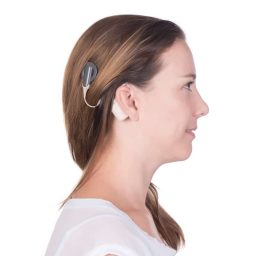Hearing loss in Albany affects about one in five people. The majority are able to treat their impairment successfully with hearing aids, but those with severe to profound hearing loss or deafness can’t be helped by traditional hearing aids. These individuals are likely to benefit from implantable hearing aids instead.
What Are Implantable Hearing Aids?
Traditional hearing aids work under a simple concept – they amplify sounds so people with hearing loss can more easily understand speech. They are considered the gold standard in treatment, benefiting about 90 percent of rhose diagnosed with a hearing impairment. But for 10 percent of the population, traditional hearing aids won’t work. Patients with hearing loss so severe that amplification alone does not help are often recommended implantable hearing aids instead.
Implantable hearing aids are surgically implanted devices that directly stimulate the bones of the middle ear rather than the auditory nerve, which is often damaged. There are three main types: cochlear implants, bone anchored hearing aids and auditory brainstem implants.
Types of Implantable Hearing Aids
The implantable hearing aid your Albany audiologist will recommend depends on your type and degree of hearing loss, as well as other health factors. Understanding the differences will be helpful as you come to terms with your hearing impairment. Your choices include the following:
- Cochlear implants. Cochlear implants are surgically implanted behind the ear. There is an external microphone, sound processor and transmitter, and an internal receiver and electrode array. The microphone picks up sound, which is converted to electronic signals by the sound processor and transmitted to the receiver. The electrodes stimulate the auditory nerve, which carries the information to the brain, where it is interpreted as sound.
- Bone anchored hearing aids. BAHA devices contain a titanium implant, an external structure and a sound processor. The titanium implant fuses with the skull bone over time, enabling the bone to act as a conductor. Similar to cochlear implants in concept, BAHA bypasses damaged nerves in the auditory canal and middle ear, transmitting sound vibrations directly to the inner ear via the skull bones, where the hair cells responsible for hearing are stimulated.
- Auditory brainstem implants. Like the other implanted hearing aids, ABI devices bypass the damaged auditory nerve – but utilize electrodes placed directly on the brainstem to relay electronic signals to the brain, where they are interpreted as sound. ABIs are much less common, usually reserved for patients with a specific and rare tumor that prevents cochlear implants from being effective.
If you are experienced a severe hearing loss, your audiologist in Albany will counsel you on the best treatment solution for your individual needs.
